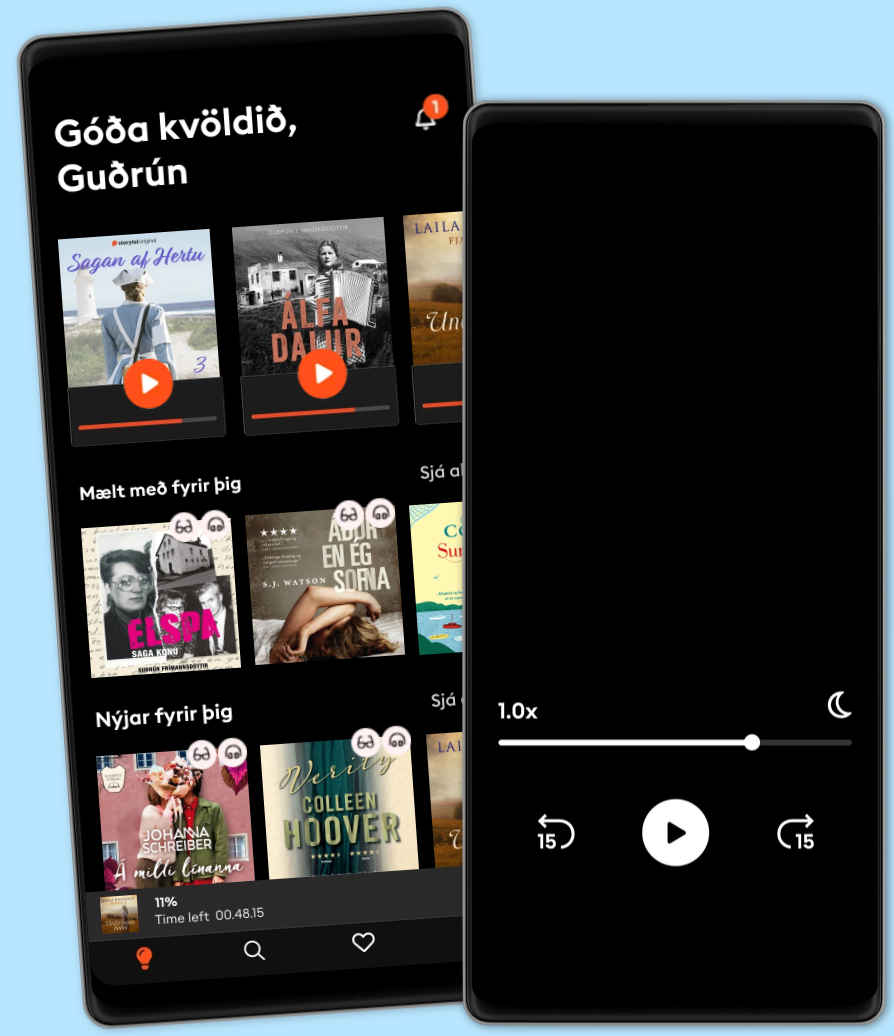Hlustaðu og lestu
Stígðu inn í heim af óteljandi sögum
- Lestu og hlustaðu eins mikið og þú vilt
- Þúsundir titla
- Getur sagt upp hvenær sem er
- Engin skuldbinding

A Computer in the Art Room: The Origins of British Computer Arts 1950-1980
- Höfundur
- Útgefandi
- Tungumál
- enska
- Format
- Flokkur
Saga
The first comprehensive account of the history of media arts in Britain.
Based on four years of research and numerous interviews with artists and practitioners, this book uncovers the little known history of early British computer art and has been hailed by Roy Ascott: “You have done us all proud! Wonderful book, superbly researched, written, designed and produced. ” Roy Ascott, Emeritus Professor, School of Art, Design and Architecture, University of Plymouth
This book records the history of an artistic practice that has been under-researched and in particular the crucial role played by a number of art schools and polytechnics in fostering the cross-disciplinary collaborations which continue to contribute to Britain’s leading role in the education and production of contemporary art. The complexity and rarity of computers during the period meant that any art form based around them was bound to be a specialised branch of art, highly dependent upon support and funding to exist. New frameworks for collaboration between arts and sciences were established during this period evident particularly in academic institutions and artist-led initiatives. A re-organisation of the educational system, an expanded notion of the art object encouraged by the artistic counter-culture of the 1960s and for a brief time, a sympathetic governmental framework enabled art with a techno-scientific basis to flourish particularly within schools of art and design. The field of early British computer arts with its emphasis on craft, materiality, process and interactivity, is a rare example of inter-disciplinary collaboration within the history of modernism.
With a foreword by Professor Clive Richards, Coventry School of Art & Design, and over 150 pictures, many published for the first time.
© 2021 JJG (Rafbók): 9781839782206
Útgáfudagur
Rafbók: 31 mars 2021
Merki
Aðrir höfðu einnig áhuga á...
- History of Modern Art Introbooks Team
- The Moderns Steven Heller
- The Thief Who Stole My Heart: The Material Life of Sacred Bronzes from Chola India, 855–1280 Vidya Dehejia
- Fun City Cinema: New York City and the Movies that Made It Jason Bailey
- Art of the Deal: Contemporary Art in a Global Financial Market Noah Horowitz
- History of Art Introbooks Team
- The Lives of the Artists Giorgio Vasari
- Art History: A Very Short Introduction: A Very Short Introduction, 2nd edition Dana Arnold
- Michelangelo, God's Architect: The Story of His Final Years and Greatest Masterpiece William E. Wallace
- Art Matters: Because Your Imagination Can Change the World Chris Riddell
- Völundur Steindór Ívarsson
4.3
- Næsta stúlkan Carla Kovach
4.1
- Lykillinn Kathryn Hughes
4.4
- Hundrað dagar í júlí Emelie Schepp
4.3
- Í þjónustu hins illa Torill Thorup
4.3
- Atlas: Saga Pa Salt Lucinda Riley
4.7
- Lára missir tönn Birgitta Haukdal
4.5
- Utan frá sjó, annað bindi Guðrún frá Lundi
4.3
- Hundeltur Torill Thorup
4.3
- 17 ástæður til að drepa Unnur Lilja Aradóttir
4
- Sjö fermetrar með lás Jussi Adler-Olsen
4.4
- Hvítalogn Ragnar Jónasson
4.1
- Blóðmeri Steindór Ívarsson
4.4
- Utan frá sjó, fyrsta bindi Guðrún frá Lundi
4.3
- Ómennska Kolbrún Valbergsdóttir
3.9
Veldu áskrift
Hundruðir þúsunda raf- og hljóðbóka
Yfir 400 titlar frá Storytel Original
Barnvænt viðmót með Kids Mode
Vistaðu bækurnar fyrir ferðalögin
Unlimited
Besti valkosturinn fyrir einn notanda
1 aðgangur
Ótakmörkuð hlustun
Engin skuldbinding
Getur sagt upp hvenær sem er
Family
Fyrir þau sem vilja deila sögum með fjölskyldu og vinum.
2-6 aðgangar
100 klst/mán fyrir hvern aðgang
Engin skuldbinding
Getur sagt upp hvenær sem er
2 aðgangar
3990 kr /á mánuðiÍslenska
Ísland